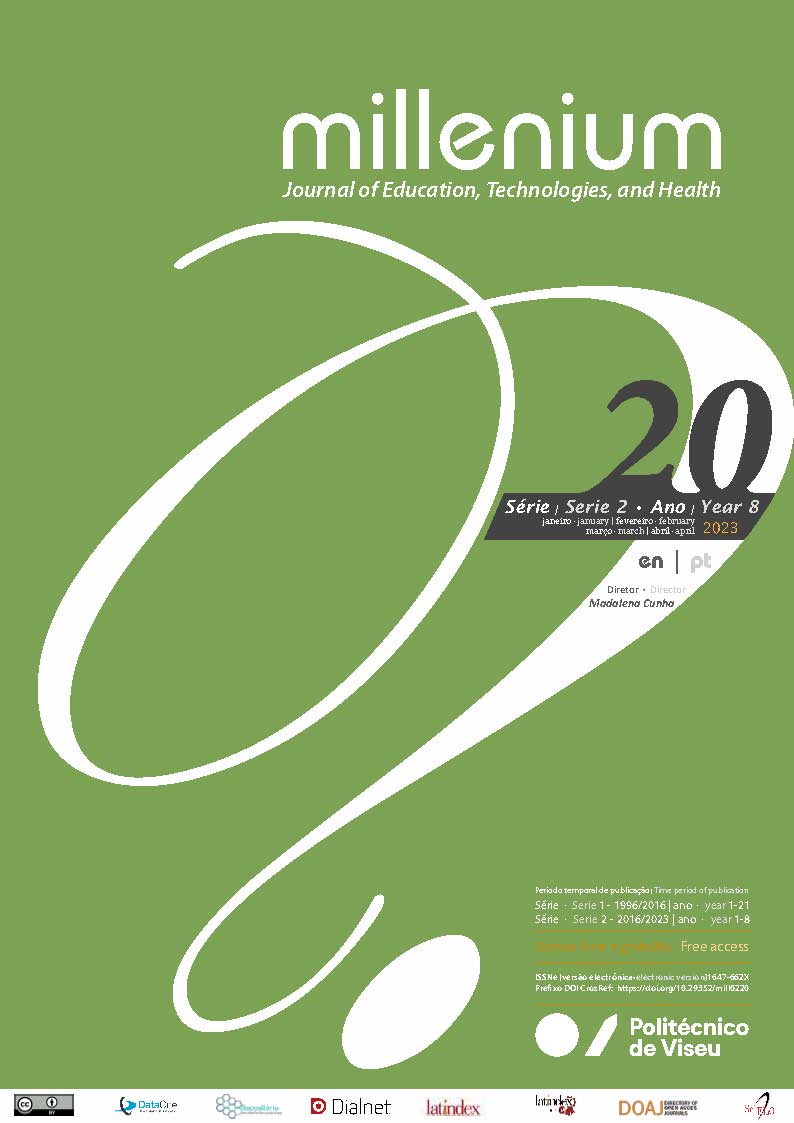Validación del formulario de evaluación de competencias de autocuidado en la persona con ostomía ventilatoria
DOI:
https://doi.org/10.29352/mill0220.27819Palabras clave:
Servicio de Urgencia en Hospital; Cuidados Críticos; Sueño; EnfermeríaResumen
Introducción: Es importante comprender el concepto de confort en su conjunto para construir un plan de intervención asistencial adecuado a las necesidades del paciente. Un ambiente tranquilo y pacífico favorece la adherencia de la persona al tratamiento, lo que permite mejores resultados.
Objetivos: Mapear las intervenciones de enfermería que promueven el confort ambiental en el sueño de la persona en situación crítica; identificar indicadores e instrumentos para evaluar el sueño de la persona en situación crítica.
Métodos: Revisión de la literatura, basada en la estrategia metodológica del Instituto Joanna Briggs para Scoping Reviews. Las bases de datos utilizadas serán: CINAHL Complete, COCHRANE Library Plus, PUBMED, JBI Evidence Synthesis, Scientific Electronic Library Online (SciELO), y como fuentes de literatura gris se incluirán, OpenGrey, Open Access Scientific Repositories of Portugal (RCAAP) y DART – Europe.
Resultados: Con la elaboración de este scoping review, se espera mapear las intervenciones de enfermería que contribuyen al confort ambiental y favorecen el sueño en personas hospitalizadas en cuidados intensivos y en situación crítica, así como indicadores e instrumentos para evaluar el sueño.
Conclusiones: El desarrollo del conocimiento sobre las intervenciones de enfermería en el contexto del cuidado crítico permitirá mapear un conjunto de intervenciones que se enfocan en promover el confort de la persona en situación crítica. Como resultado, centrándose en las intervenciones dirigidas al confort, se produce una mejora en la calidad y cantidad del sueño, lo que contribuye al normal funcionamiento y rápida recuperación de la persona en situación crítica.
Descargas
Citas
Aydın Sayılan, A., Kulakaç, N., & Sayılan, S. (2021). The effects of noise levels on pain, anxiety, and sleep in patients. Nursing in Critical Care, 26(2), 79–85. https://doi.org/10.1111/nicc.12525
Biazim, S. K., Souza, D. A., Carraro Junior, H., Richards, K., & Valderramas, S. (2020). Tradução e adaptação transcultural para a língua portuguesa usada no Brasil de Richards-Campbell Sleep Questionnaire e Sleep in the Intensive Care Unit Questionnaire. Jornal Brasileiro de Pneumologia, 46. https://doi.org/10.36416/1806-3756/e20180237
Cardoso, R., Alfradique de Souza, P., Caldas, C., & Bitencourt, G. (2020). Diagnósticos de enfermagem em idosos hospitalizados à luz da teoria do conforto de Kolcaba. Revista de Enfermagem Referência, V Série. https://doi.org/10.12707/RV20066
Corporation for Digital Scholarship and Roy Rosenzweig Center for & History and New Media. (2021). Zotero | Your personal research assistant (Zotero 5.0.94). https://www.zotero.org/
Engwall, M., Fridh, I., Jutengren, G., Bergbom, I., Sterner, A., & Lindahl, B. (2017). The effect of cycled lighting in the intensive care unit on sleep, activity and physiological parameters: A pilot study. Intensive & Critical Care Nursing, 41, 26–32. https://doi.org/10.1016/j.iccn.2017.01.009
González Gómez, A., Montalvo Prieto, A., Herrera Lian, A., González Gómez, A., Montalvo Prieto, A., & Herrera Lian, A. (2017). Comodidad de los pacientes hospitalizados en unidades de cuidado intensivo e intermedio. Enfermería Global, 16(45), 266–294. https://doi.org/10.6018/eglobal.16.1.260101
Herdman, S. T., & Kamitsuru, S. (2018). Diagnósticos de enfermagem da NANDA-I: Definições e classificação 2018-2020 (11a edição). Porto Alegre: Artmed.
Munn, Z., Peters, M. D. J., Stern, C., Tufanaru, C., McArthur, A., & Aromataris, E. (2018). Systematic review or scoping review? Guidance for authors when choosing between a systematic or scoping review approach. BMC Medical Research Methodology, 18(1), 143. https://doi.org/10.1186/s12874-018-0611-x
Peters, M. D. J., Marnie, C., Tricco, A. C., Pollock, D., Munn, Z., Alexander, L., McInerney, P., Godfrey, C. M., & Khalil, H. (2020). Updated methodological guidance for the conduct of scoping reviews. JBI Evidence Synthesis, 18(10), 2119–2126. https://doi.org/10.11124/JBIES-20-00167
Silva, S. F. C. da. (2019). A promoção do sono na pessoa em situação crítica internada em unidade de cuidados intensivos: [MasterThesis]. https://comum.rcaap.pt/handle/10400.26/32095
Valente, C. S. P. (2019). A Promoção do Sono na Pessoa em Situação Crítica [MasterThesis, Instituto Politécnico de Setúbal. Escola Superior de Saúde]. https://comum.rcaap.pt/handle/10400.26/29190
Descargas
Publicado
Cómo citar
Número
Sección
Licencia
Derechos de autor 2022 Millenium - Journal of Education, Technologies, and Health

Esta obra está bajo una licencia internacional Creative Commons Atribución 4.0.
Los autores que sometan propuestas para esta revista estarán de acuerdo con los siguientes términos:
a) Los artículos serán publicados según la licencia Licença Creative Commons (CC BY 4.0), conforme el régimen open-access, sin cualquier coste para el autor o para el lector.
b) Los autores conservan los derechos de autor y conceden a la revista el derecho de la primera publicación, se permite la divulgación libre del trabajo, desde que sea correctamente atribuida la autoría y la publicación inicial en esta revista.
c) Los autores están autorización para firmar contratos adicionales separadamente, para la distribución no exclusiva de la versión del trabajo publicada en esta revista (ej.: publicar en un repositorio institucional o como capítulo de un libro), con reconocimiento de la autoría y publicación inicial e esta revista.
d) Los autores tienen permiso y son alentados a publicar y distribuir su trabajo on-line (ej.: en repositorios instituciones o en su página personal) ya que eso podrá generar alteraciones productivas, así como aumentar el impacto y la citación del trabajo publicado.
Documentos necesarios para la sumisión
Plantilla del artículo (formato editable)





